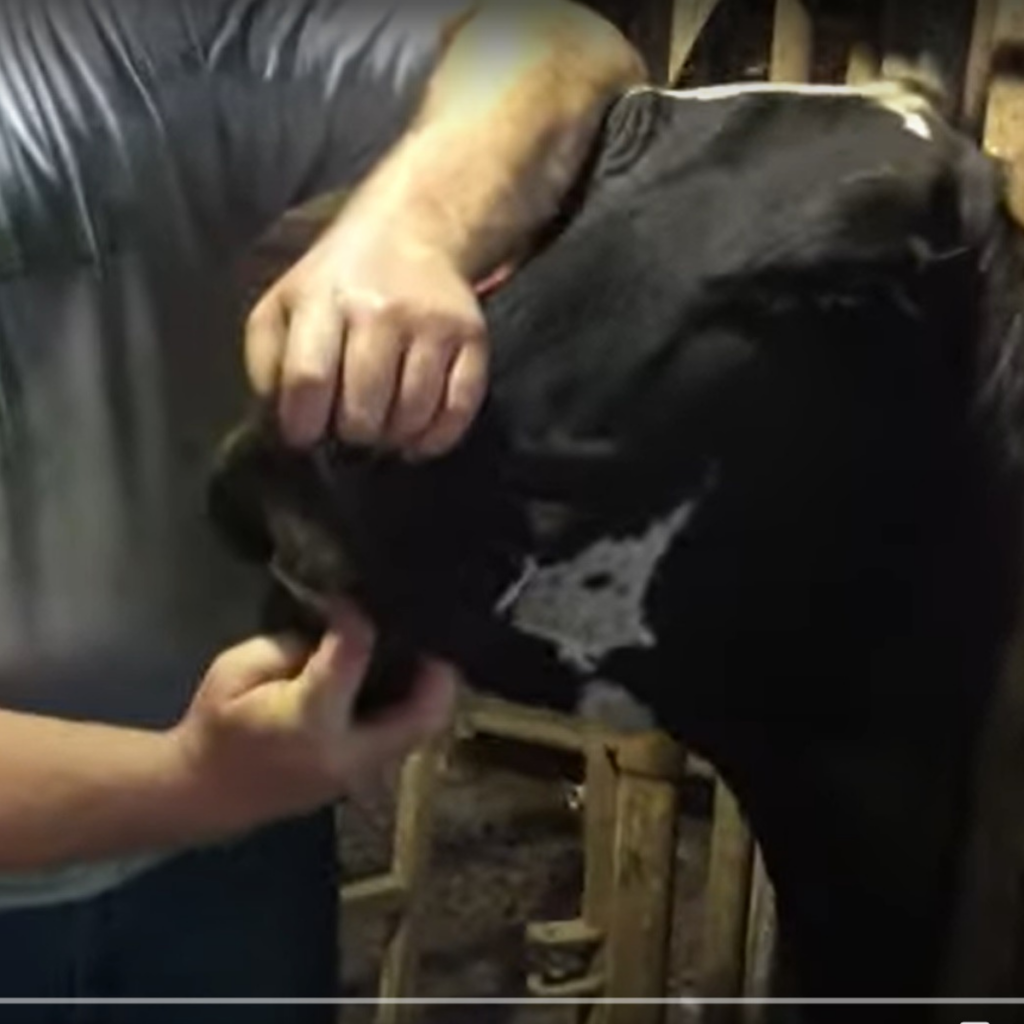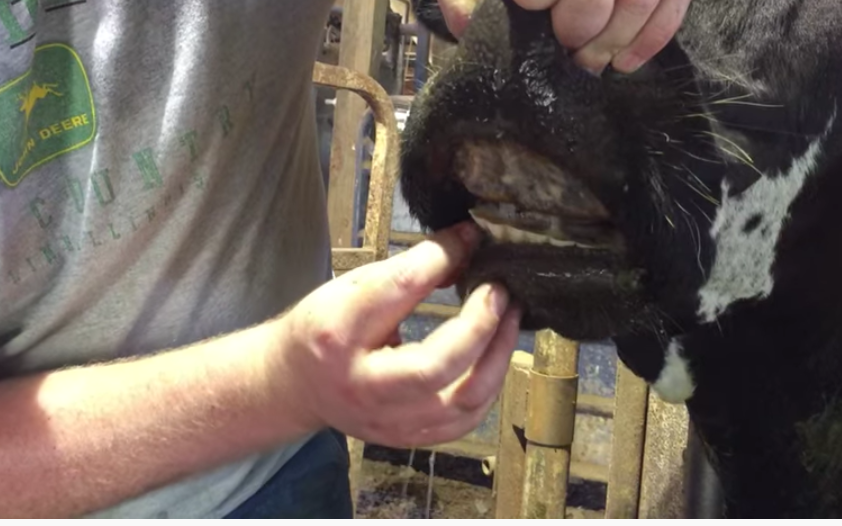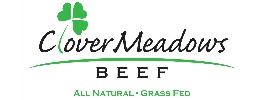We’re sometimes asked, “Do cows have teeth?” and “Can they bite you?” Teeth are extremely important for a cow because they need to be able to chew grass so they can digest it. Cows do have teeth, but they can’t bite like humans can. Here’s why…

Do cows have teeth?
Yes, cows have teeth, and it’s by their teeth that you can tell their age.
Since we’re a cow-calf farm, we usually know exactly when our cattle are born. But if for some reason we’re not sure, we can estimate their age by looking at their teeth. When estimating age, we look at the number of incisor teeth, the type of teeth (“baby teeth” or permanent teeth), and the wear and overall appearance of the teeth.

How many teeth does a cow have?
Cows have a total of 32 teeth and they’re three types of teeth: incisors, premolars and molars. Only the incisors (bottom front teeth) are used to estimate their age.
Here’s a short video of Matt checking a cow’s teeth. (And don’t worry — this doesn’t hurt the cow at all!)
Can a cow bite you?
Cows can’t bite a person because they don’t have any upper front teeth.
When cattle are eating grass, they press their sharp bottom teeth against the top of their mouth, which is a hard palate. This then cuts the blades of grass so they can chew the grass.
Since there are no top teeth, a cow may “gum” you, but it won’t bite you.
Fun facts about cow teeth
- Cattle have 32 teeth. This includes six incisors or biting teeth, and 2 canines in the bottom front of the jaw.
- The incisor teeth at the bottom front of the jaw are used to estimate a cow’s age. When estimating cattle by age, the farmer (or vet) looks at the front bottom row of teeth. Specifically, he is looking for the number of teeth, the type of teeth (“baby teeth” or permanent teeth), and the wear and overall appearance of the teeth.
- Cattle start life with baby teeth. They get their first permanent teeth when they’re about 1 ½ – 2 years old.
- Cows have three types of teeth: incisors, premolars and molars.
- Cows can’t bite because they don’t have top front teeth. They may “gum” you, but they can’t bite you.
- Cattle do have molars on the upper and lower jaw, but their incisors are only the lower jaw.
- As a cow gets older, their teeth shows more wear. The tops of the teeth will lose their sharpness and continue to grind down.
- Cows are ruminant animals and they regurgitate their food. This means that once grass is partially chewed, they swallow it, regurgitate it, chew it more and then swallow again. They repeat that process about 50 times so that their stomach can fully digest the plant fiber. Ruminant animals have a four-chambered stomach that lets them regurgitate their food so that they can get a maximum amount of nutrients from their food.
- All ruminant animals have a tough dental pad on their top lip instead of top front teeth. Some of the animals that have this tough pad at the top of their mouths are cattle, sheep, goats, antelopes, giraffes, deer, and more.
- George Washington’s Dentist made him dentures out of cow, hippopotamus and walrus teeth
One more thing!
Do you want to learn more about beef? Join our weekly e-newsletter where we share farm happenings, recipes and beef availability. Sign-up and get a cheat sheet with 9-must-ask questions before buying beef directly from a farmer. Or, we have an entire ebook about beef that goes through purchasing and preparing beef from a cattle farmer’s perspective.
Here are a few other links you may like:
- Beef Kabobs and Marinade
- Slow Cooker Mongolian Beef
- Easy Slow Cooker Pot Roast
- Ground Beef and Asparagus Pasta Toss
- Easy Chimichurri Sauce
- What everybody ought to know about beef cuts
Disclosure: This post contains affiliate links. This means if you click on the link and purchase the item, we will receive an affiliate commission at no extra cost to you. All opinions are our own and we only recommend products that we truly believe in.
We participate in the Amazon Services LLC Associates Program, an affiliate advertising program designed to provide a means for us to earn fees by linking to Amazon.com and affiliated sites. See our disclosure policy for more details.

